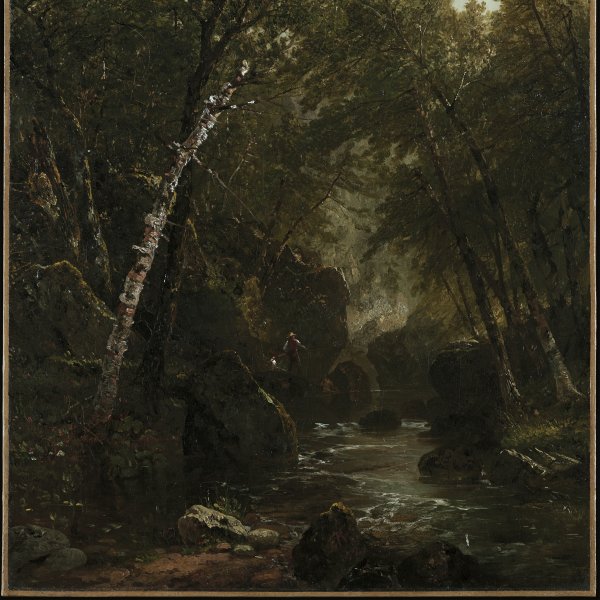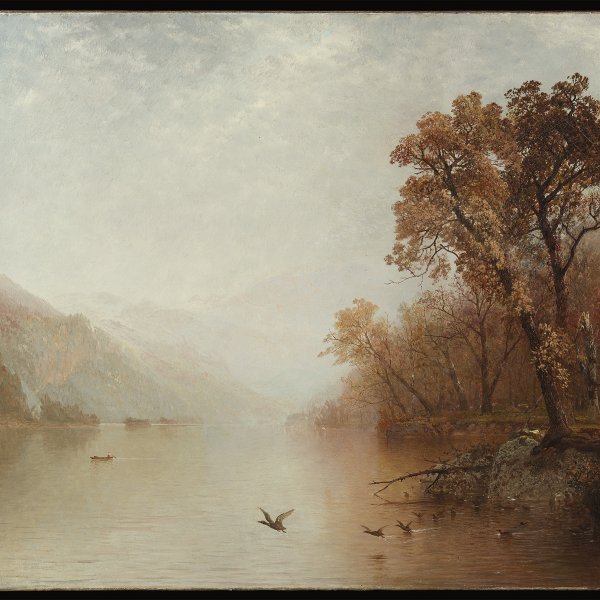John Frederick Kensett
Cheshire, 1816-NewYork, 1872
A member of the second generation of Hudson River School painters, John Frederick Kensett was the son of an English engraver who had emigrated to America. He trained with his father, began to work in the trade in New Haven and New York, and gradually introduced landscape into his engravings. In 1840, after deciding to concentrate solely on painting, Kensett went to Europe with John Casilear, Asher B. Durand and Thomas P. Rossiter. These extensive travels took him to England, France, Germany, Switzerland and Italy, and in 1847 he returned to the United States, where he settled in New York. Thenceforward he concentrated on painting landscapes close to the city, particularly those of the coast of Newport and Lake George.
Not long after he returned from Europe, Kensett had already succeeded in making a name for himself in artistic circles and was soon elected a member of the National Academy. He led a very active life in artistic and academic milieus: he was a member of the select Century Club, where he came into contact with many people related to the world of art and literature and sat on the national advisory committee for the decoration of the Capitol. He was also involved in the establishment of The Metropolitan Museum of Art in 1870. Kensett’s early work bears the mark of Thomas Cole and English painters such as John Constable. His style of painting became progressively simpler, under the influence of his friend Durand and the Luminism of the age. This tendency towards reduction was one of the constant features of his artistic development and in the early 1870s his compositions became simple strips of colour that divided land, sea and sky.
Not long after he returned from Europe, Kensett had already succeeded in making a name for himself in artistic circles and was soon elected a member of the National Academy. He led a very active life in artistic and academic milieus: he was a member of the select Century Club, where he came into contact with many people related to the world of art and literature and sat on the national advisory committee for the decoration of the Capitol. He was also involved in the establishment of The Metropolitan Museum of Art in 1870. Kensett’s early work bears the mark of Thomas Cole and English painters such as John Constable. His style of painting became progressively simpler, under the influence of his friend Durand and the Luminism of the age. This tendency towards reduction was one of the constant features of his artistic development and in the early 1870s his compositions became simple strips of colour that divided land, sea and sky.





